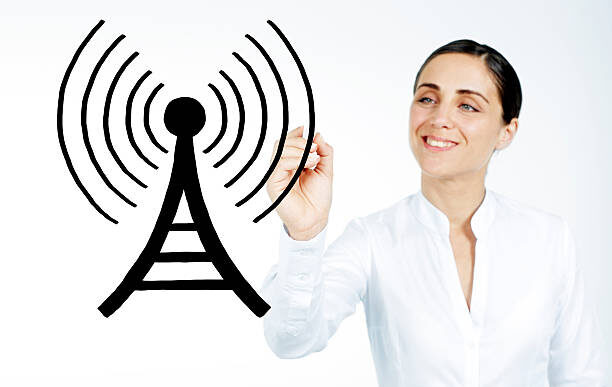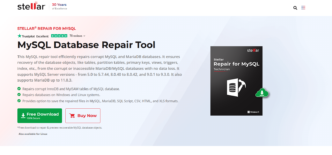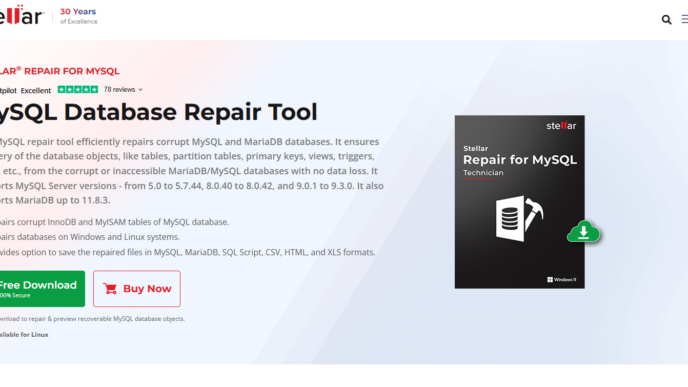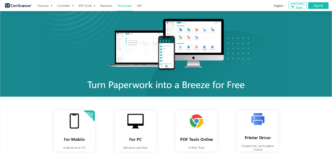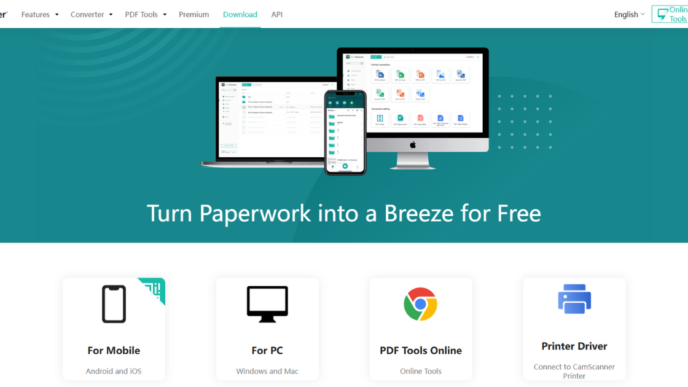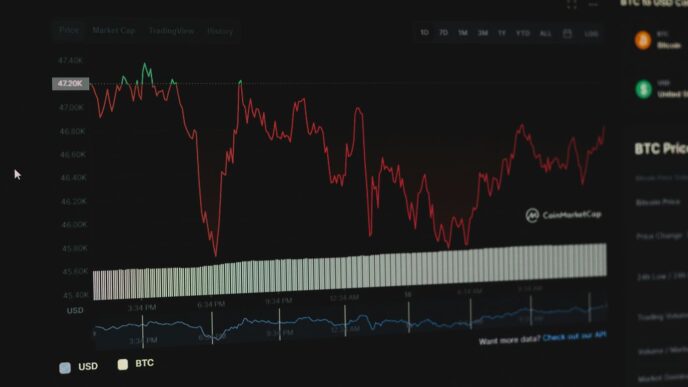The way healthcare works is changing fast, and a big part of that change is thanks to healthcare cloud technology. This stuff is helping doctors and hospitals do things way better, from keeping patient records safe to making sure folks can get medical help from far away. It’s a huge step forward for patient care, making things smoother and more connected than ever before. This article will look at how cloud tech is shaking things up in healthcare, what good it’s doing, what hurdles it faces, and where it’s headed next.
Key Takeaways
- Healthcare cloud technology is super important for handling patient data, making it easier to get to and manage.
- Using cloud systems helps healthcare places run better and save money, which is a big deal for everyone.
- Cloud tech makes patient information more secure and helps meet all the rules about privacy.
- Things like online doctor visits and keeping an eye on patients remotely are way better because of the cloud.
- Even with some challenges, healthcare cloud technology is set to keep growing and changing how medical care is given.
The Growing Importance of Healthcare Cloud Technology
Healthcare is changing fast, and a big part of that is due to cloud technology. It’s not just about storing files anymore; it’s about changing how healthcare works from the ground up. Many healthcare organizations have been slow to adopt cloud solutions, but that’s changing as they see the benefits. The need for better data management, faster access to information, and more efficient ways to work is pushing healthcare further into the cloud. Let’s take a look at why this is happening.
Transforming Healthcare Data Management
Healthcare organizations are drowning in data. Patient records, test results, imaging scans – it’s a lot to handle. Traditional systems often struggle to keep up, leading to inefficiencies and potential errors. Cloud computing offers a way out by providing scalable and secure storage solutions. This means healthcare providers can store all their data in one place and access it from anywhere, at any time. This is especially important for cloud computing in healthcare, where real-time access to patient information can make a big difference in treatment decisions.
Driving Digital Transformation in Healthcare
Cloud technology is more than just storage; it’s a catalyst for digital transformation. It enables healthcare providers to adopt new technologies like telemedicine, remote patient monitoring, and AI-powered diagnostics. These technologies rely on the cloud’s ability to handle large amounts of data and provide the computing power needed to run complex algorithms. Think about it: mobile apps, IoT-enabled devices, and big data analytics all depend on the cloud to function properly. It’s about creating a more connected and efficient healthcare ecosystem. The industry is witnessing immense growth and transformation owing to the ongoing development and adoption of new and innovative technologies and trends. Electronic Health Records (EHR), telemedicine, telehealth, medical research, and analytics are some of the key technologies playing a crucial role in the healthcare market and delivering optimum results.
Meeting the Demands of Modern Healthcare
Modern healthcare demands are constantly evolving. Patients expect more personalized care, faster access to information, and more convenient ways to interact with their healthcare providers. Cloud technology helps meet these demands by enabling things like patient portals, mobile apps, and remote monitoring. It also facilitates better collaboration between healthcare professionals, leading to improved patient outcomes. The cloud enables safer sharing of medical records, enhancing patient privacy and security while improving access to vital health information. The automation of processes facilitated by cloud technology is expected to streamline operations, reduce administrative burdens, and improve care coordination. The growing demand for collaboration and information sharing among healthcare professionals has driven the integration of cloud services in the healthcare sector. This facilitates real-time communication and data exchange, enhancing care coordination, accelerating decision-making, and improving patient outcomes.
Key Benefits of Healthcare Cloud Technology
Okay, so let’s talk about why everyone’s making such a big deal about healthcare cloud tech. It’s not just hype; there are some seriously good reasons to switch over. It’s about making things better for everyone involved, from the doctors and nurses to the patients themselves. Let’s break down the main advantages.
Enhanced Data Storage and Accessibility
Think about all the paperwork and files that used to clog up hospitals. Now imagine all that information, but digital and available instantly. That’s what cloud storage brings to the table. It’s not just about saving space; it’s about making patient data accessible whenever and wherever it’s needed. Doctors can pull up records during emergencies, specialists can collaborate from different locations, and patients can even access their own information through secure portals. It’s a game-changer for healthcare data management.
Improved Operational Efficiency and Cost Savings
Running a healthcare facility is expensive. Really expensive. Cloud technology can actually help cut costs in a bunch of ways. You don’t need to buy and maintain a ton of servers, which saves on hardware, electricity, and IT staff. Plus, cloud services are usually pay-as-you-go, so you only pay for what you use. This flexibility supports the growth of healthcare organizations through effective resource management. It also streamlines a lot of processes, like appointment scheduling, billing, and inventory management. Less wasted time and resources mean more focus on patient care. Here’s a quick look at potential savings:
| Area | Traditional System | Cloud-Based System | Savings |
|---|---|---|---|
| IT Infrastructure | $50,000/year | $15,000/year | $35,000 |
| Data Storage | $20,000/year | $5,000/year | $15,000 |
| Maintenance | $10,000/year | $2,000/year | $8,000 |
Strengthening Data Security and Compliance
I know what you’re thinking: "Putting all that sensitive patient data in the cloud? Sounds risky!" But actually, cloud providers invest a ton in security. They have teams of experts and advanced technologies to protect against cyber threats. Plus, they’re usually really good at keeping up with regulations like HIPAA. Of course, you still need to do your part by choosing a reputable provider and implementing strong security practices. But in many cases, cloud storage is actually more secure than keeping everything on-site. Vendor Reliability and Support are important factors to consider. Cloud computing enhances data accessibility, scalability, and security by providing a secure and flexible infrastructure for effective data management. This technology enables healthcare providers to efficiently store and access vital information.
Real-World Applications of Healthcare Cloud Technology

It’s easy to talk about the theory behind cloud tech in healthcare, but what does it actually look like in practice? Turns out, there are a bunch of really cool ways cloud solutions are changing how healthcare is delivered. From helping doctors see patients remotely to making sure everyone has the right info at their fingertips, the cloud is making a real difference. The real-world applications of cloud technology in healthcare are vast and varied, showcasing the transformative potential of this technology.
Advancing Telemedicine and Remote Patient Monitoring
Telemedicine has exploded, and the cloud is a big reason why. Think about it: doctors can now "see" patients who live miles away, all thanks to secure video conferencing and remote monitoring tools. Cloud-based platforms make it possible to share data in real-time, so doctors can make informed decisions even when they aren’t in the same room as their patients. This is especially important for people in rural areas or those with mobility issues. Plus, remote patient monitoring IoT-enabled devices can track vital signs and send alerts if something seems off, potentially preventing serious health problems. It’s like having a virtual check-up, anytime, anywhere. Increased engagement can lead to better health behaviors and outcomes.
Streamlining Electronic Health Records Management
Remember the days of paper charts? What a mess! Now, with cloud-based Electronic Health Records (EHRs), patient information is stored securely and can be accessed from anywhere with an internet connection. This means doctors, nurses, and other healthcare providers can quickly find the information they need, leading to better care and fewer errors. Plus, cloud-based EHRs make it easier to share information between different healthcare facilities, so patients don’t have to repeat their medical history every time they see a new doctor. It’s all about making things more efficient and convenient for everyone involved. 123.clinic is revolutionizing healthcare through its innovative medical center management solutions.
Enabling Data-Driven Diagnostics and AI
The amount of data generated in healthcare is mind-boggling, but the cloud makes it possible to analyze all that information and use it to improve patient care. For example, AI algorithms can be trained on massive datasets to identify patterns and predict which patients are at risk for certain diseases. This can help doctors make earlier diagnoses and develop more effective treatment plans. Cloud computing in healthcare offers the scalability and flexibility needed to enhance data management and ultimately improve the decision-making process. It’s like having a super-smart assistant that can help doctors make better decisions based on the latest data.
Challenges and Considerations for Healthcare Cloud Technology Adoption
Addressing Data Privacy and Regulatory Compliance
Healthcare data is super sensitive, and moving it to the cloud brings up some serious questions. We’re talking about HIPAA, GDPR, and a whole alphabet soup of regulations that you absolutely cannot mess with. It’s not just about avoiding fines; it’s about protecting patient trust. You need to make sure your cloud provider is compliant and that you have the right security measures in place. Think encryption, access controls, and regular audits. It’s a big job, but it’s non-negotiable. You also need to think about data residency – where your data is physically stored – because different countries have different rules. It’s a complex web, but getting it right is key to data protection regulations.
Overcoming Integration Complexities
Let’s be real, most hospitals aren’t running on brand-new systems. They’ve got legacy systems that have been around for ages, and trying to get them to play nice with the cloud can be a nightmare. It’s like trying to fit a square peg in a round hole. You might need to build custom interfaces or even replace some of your old systems altogether. This can be expensive and time-consuming, and there’s always the risk of something breaking during the migration. Plus, you need to think about interoperability – making sure that different systems can talk to each other. It’s not just about getting your own systems into the cloud; it’s about being able to share data with other providers and streamline electronic health records.
Managing Costs and Resource Allocation
Cloud computing can save you money in the long run, but it’s not free. You’ve got to factor in the cost of migration, ongoing subscription fees, and the resources you’ll need to manage your cloud environment. And don’t forget about training your staff – they’ll need to learn how to use the new systems. It’s easy to underestimate these costs, so it’s important to do your homework and create a realistic budget. You also need to think about how you’re going to allocate your resources. Do you have the in-house expertise to manage your cloud environment, or will you need to hire outside help? These are all important questions to ask before you make the leap. Vendor lock-in is also a concern. Switching cloud providers later can be difficult and costly, so it’s important to choose wisely and consider exit strategies.
The Future of Healthcare Cloud Technology
Cloud computing is changing healthcare at a rapid pace. It’s not just about storing data anymore; it’s about making healthcare smarter, faster, and more connected. The future looks bright, with innovations coming that will change how doctors treat patients and how hospitals operate. Cloud computing in healthcare has a promising future, offering extensive applications and significant benefits.
Leveraging Edge Computing for Faster Processing
Edge computing is going to be a game-changer. Instead of sending all data to a central cloud, edge computing processes data closer to where it’s collected – like right at the hospital or clinic. This means faster processing times and quicker decisions, which can be critical in emergency situations. Think about real-time analysis of patient data from wearable devices or immediate processing of medical images. This reduces delays and improves patient outcomes. It’s like having a mini-cloud right where you need it.
Enhancing Interoperability and Data Sharing
Right now, different healthcare systems often struggle to share data. It’s a mess of incompatible systems and formats. The future of healthcare cloud technology is all about fixing this. We’re talking about seamless interoperability, where electronic health records (EHRs), medical devices, and different healthcare providers can all communicate and share information easily. This means doctors can get a complete picture of a patient’s health history, no matter where they’ve been treated. It also means less paperwork and fewer errors. It’s about making sure everyone has the information they need, when they need it.
Innovations in AI and Machine Learning
AI and machine learning are already making waves in healthcare, and the cloud is making it even easier to use these technologies. Cloud-based AI can analyze huge amounts of data to identify patterns, predict patient outcomes, and even help doctors make better diagnoses. Imagine AI algorithms that can detect diseases earlier or personalize treatment plans based on a patient’s unique genetic makeup. The cloud provides the computing power and storage needed to run these complex algorithms, making AI-powered healthcare a reality. This will lead to data-driven diagnostics and AI, improving patient care and outcomes.
Successfully Adopting Healthcare Cloud Technology
Okay, so you’re thinking about moving your healthcare operations to the cloud? Smart move! But it’s not as simple as just flipping a switch. You need a plan, a good team, and maybe a little bit of luck. Let’s break down how to actually make this happen.
Strategic Planning and Implementation
First things first: figure out what you actually need. Don’t just jump on the cloud bandwagon because everyone else is doing it. What problems are you trying to solve? Do you need better data storage, improved collaboration, or something else entirely? Once you know your goals, you can start planning your cloud adoption strategy. This involves:
- Assessing your current IT infrastructure. What can stay, what needs to go, and what needs to be updated?
- Choosing the right cloud model (public, private, or hybrid). Each has its pros and cons, so pick the one that fits your needs and budget.
- Developing a detailed migration plan. This should include timelines, milestones, and contingency plans (because things will go wrong).
Ensuring Staff Training and Buy-In
Your fancy new cloud system won’t do you any good if your staff doesn’t know how to use it. Training is key. Make sure everyone understands the new workflows, tools, and security protocols. And don’t forget about buy-in! Explain the benefits of the cloud to your staff and address any concerns they may have. A little communication can go a long way. Here’s a simple breakdown of training needs:
| Role | Training Focus | Estimated Time | Cost |
|---|---|---|---|
| Doctors | EHR access, telemedicine platforms | 4 hours | $200/person |
| Nurses | Data entry, patient monitoring tools | 6 hours | $300/person |
| IT Staff | Cloud management, security protocols | 16 hours | $800/person |
| Administrative Staff | Billing systems, data access permissions | 4 hours | $150/person |
Partnering with Expert Cloud Providers
Unless you have a team of cloud experts on staff (most healthcare organizations don’t), you’ll probably need to partner with a cloud service provider. Look for a provider with experience in the healthcare industry and a strong track record of security and compliance. They can help you with everything from migration to ongoing support. Don’t be afraid to shop around and compare different providers before making a decision. Consider these factors when choosing a provider:
- Security: Do they have robust security measures in place to protect patient data?
- Compliance: Are they compliant with HIPAA and other relevant regulations?
- Support: Do they offer 24/7 support in case something goes wrong?
- Scalability: Can they scale their services to meet your growing needs?
- Cost: Is their pricing transparent and competitive?
Wrapping Things Up
So, as we’ve seen, cloud technology is really changing things in healthcare. It’s helping with everything from keeping patient info safe to making it easier for doctors to work together. Sure, there are some bumps in the road when adopting new tech, but the good stuff that comes from using the cloud in healthcare is pretty big. It’s not just a nice-to-have anymore; it’s becoming a must-have for healthcare places that want to keep up and give people the best care possible. The future of healthcare definitely looks like it’s going to be in the cloud.
Frequently Asked Questions
What is cloud computing in healthcare?
Cloud computing in healthcare means using internet-based services to store, manage, and process healthcare data. Instead of keeping everything on local computers, hospitals and clinics use powerful remote servers. This makes it easier to access patient records, share information, and use advanced tools like AI, all while keeping data safe and private.
How does cloud computing improve teamwork among healthcare providers?
Cloud technology helps healthcare providers work together better by making patient information easily available to authorized staff, no matter where they are. Doctors, nurses, and specialists can securely view and update records, share notes, and discuss cases in real-time. This smooth flow of information leads to quicker decisions and more coordinated patient care.
What are the main benefits of using cloud technology in healthcare?
Cloud computing offers many advantages, like handling huge amounts of data easily, saving money on IT equipment, and boosting security for sensitive patient information. It also helps healthcare organizations be more flexible, quickly adding or removing resources as needed. This leads to better patient experiences and more efficient operations.
Is cloud computing safe for patient information?
Yes, cloud computing is very secure for healthcare data. Cloud providers use strong encryption, strict access controls, and regular security checks to protect patient information. They also follow important rules like HIPAA to make sure data privacy is maintained. This makes the cloud a reliable and safe place for sensitive medical records.
How is cloud computing changing the way healthcare is delivered?
Cloud computing is changing healthcare in many ways. It makes telemedicine and remote monitoring possible, letting doctors see patients and track their health from a distance. It also helps manage electronic health records more efficiently and powers new tools like AI for faster and more accurate diagnoses. This all adds up to better and more accessible care for patients.
What should healthcare organizations consider when adopting cloud technology?
When moving to the cloud, healthcare organizations need to think about a few important things. They must make sure they follow all privacy rules, plan how to connect new cloud systems with existing ones, and manage the costs of moving and maintaining data in the cloud. It’s also key to train staff and pick the right cloud partners to make the transition smooth and successful.




